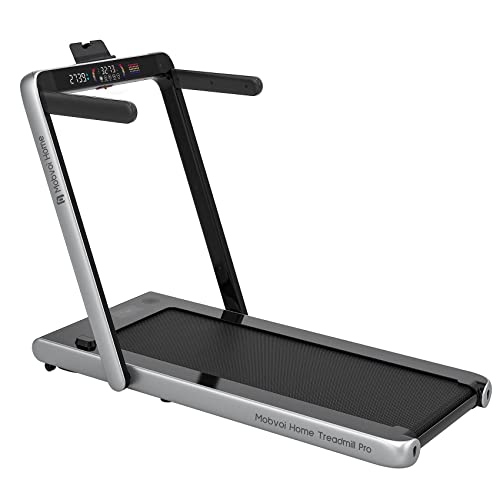Say "Yes" To These 5 Treadmill That Inclines Tips

The Benefits and Functionality of Incline Treadmills: An In-Depth Overview
In the ever-evolving realm of fitness devices, treadmills stay a cornerstone for both home and gym workouts. Among Home Treadmills , incline treadmills have acquired specific appeal due to their ability to boost the intensity and effectiveness of cardiovascular workout. This short article analyzes the functions, benefits, and practical applications of incline treadmills, offering insights for fitness enthusiasts and newbies alike.
What is an Incline Treadmill?
An incline treadmill is a kind of treadmill that allows users to adjust the angle of the running surface, simulating the experience of running or walking uphill. This feature sets incline treadmills apart from traditional flat treadmills, offering a variety of advantages that boost total exercise programs. Users can usually elevate the incline from 0% (flat) to as steep as 15% or more, depending upon the model.
Types of Incline Treadmills
Before delving into the benefits of utilizing an incline treadmill, it's important to comprehend the various types offered:
- Manual Incline Treadmills: These designs need the user to adjust the incline by hand. They are generally more economical but do not have the advanced functions discovered in motorized designs.
- Motorized Incline Treadmills: Equipped with electronic controls, motorized treadmills allow users to adjust the incline with the push of a button. They frequently include preset exercise programs customized to various fitness goals.
- Commercial Incline Treadmills: Often used in health clubs and health clubs, these treadmills are constructed for durability and come with advanced functions, consisting of big screens and extensive exercise programs.
- Folding Incline Treadmills: Ideal for those with restricted area, these treadmills can be folded after use while still offering incline functionality.
Benefits of Using an Incline Treadmill
Incline treadmills use a myriad of advantages that can positively impact a person's physical fitness journey. Here are some noteworthy advantages:
1. Increased Caloric Burn
Utilizing an incline treadmill significantly increases calorie expenditure compared to walking or working on a flat surface area. Research studies recommend that users can burn up to 50% more calories when working out on an incline. This makes incline treadmills an excellent alternative for those seeking to shed pounds or keep a healthy weight.
2. Improved Cardiovascular Fitness
Incline workouts raise the heart rate and supply an outstanding cardio exercise. Enhanced cardiovascular physical fitness can result in better heart health, increased stamina, and overall health.
3. Muscle Engagement
Running or walking on an incline engages various muscle groups, especially the calves, hamstrings, and glutes. The activation of these muscles helps construct strength and enhances toning.
4. Joint-Friendly Workouts
Incline treadmills reduce some effect on the joints compared to working on harder surfaces. The incline can motivate a more natural stride and lower the propensity to heel strike, therefore making it a preferable alternative for individuals with joint issues.
5. Flexible Training Options
Incline treadmills offer a variety of training choices, making them ideal for users with differing physical fitness levels:
- Beginner Workouts: Low inclines can offer a fantastic intro to raised walking.
- Period Training: Alternating in between high inclines and flat surface areas can challenge clinging fitness levels and mimic outdoor surface.
- Endurance Training: Extended sessions at a consistent or gradually increasing incline can enhance overall endurance.
How to Use an Incline Treadmill Effectively
Getting the most out of an incline treadmill requires understanding of how to use it properly. Here are some tips for optimizing workouts:
- Start Slow: Beginners ought to gradually accustom to the incline. Starting with a moderate incline for much shorter periods can assist avoid injury.
- Engage Core Muscles: For enhanced stability and support, actively engage core muscles throughout exercises.
- Preserve Proper Form: Keep shoulders relaxed, direct, and utilize a natural arm movement to complement the stride.
- Hydration and Recovery: Ensure adequate hydration before, throughout, and after your exercise. Permit healing days to assist muscles recuperate.
- Set Goals: Whether concentrating on weight-loss, cardiovascular fitness, or muscle tone, setting possible objectives can help keep the workout regular structured and inspiring.
Frequently Asked Questions (FAQs)
1. Are incline treadmills worth it?
Yes, incline treadmills deserve it for those looking for increased calorie burn and boosted muscle engagement. They provide a difficult workout for users at all levels of fitness.
2. How often should I use an incline treadmill?
Frequency can vary based on specific fitness levels, however including incline treadmill exercises 3 to 5 times each week is typically sufficient for a lot of users.
3. Can incline treadmills aid with weight loss?
Definitely! Incline exercises can substantially increase calorie burn, making them an excellent element of a weight-loss strategy when combined with a well balanced diet.
4. What is the ideal incline for newbies?
Newbies should start with a low incline (1-3%) to adapt to the exercise before slowly increasing it as they become more comfortable.
5. Do incline treadmills need a great deal of maintenance?
The majority of incline treadmills require minimal maintenance. Regular cleansing, checking the belt alignment, and ensuring lubrication can keep the machine working efficiently.
Incline treadmills are a flexible and reliable tool for boosting physical fitness regimens. With their ability to increase calorie burn, improve cardiovascular health, and engage various muscle groups, they offer an exceptional option to conventional flat treadmills. Whether you're an experienced athlete or a fitness novice, integrating inclined workouts into your regimen can lead to substantial health advantages. By understanding the different types available and best practices for use, individuals can maximize their efforts on this effective tool and pursue achieving their physical fitness objectives.

